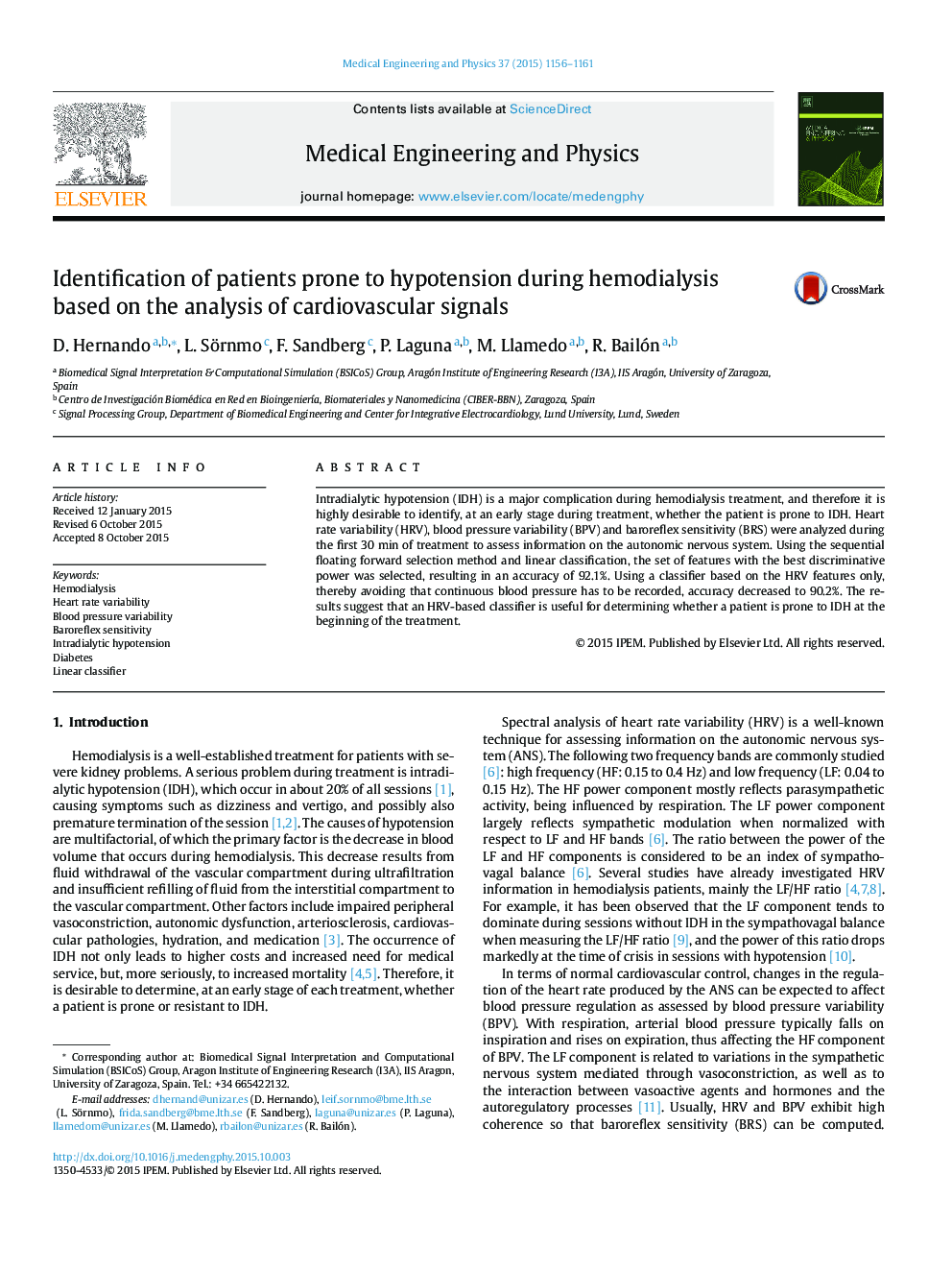| Article ID | Journal | Published Year | Pages | File Type |
|---|---|---|---|---|
| 875692 | Medical Engineering & Physics | 2015 | 6 Pages |
•This study presents a multivariate classifier to discriminate IDH prone and resistant patients.•The first 30 minutes of treatment, when IDH is unlikely to occur, are used to extract ANS related parameters.•Heart rate variability (HRV), blood pressure variability and baroreflex sensitivity are analyzed, with the normalized power in the HRV low frequency band as the most discriminative index.•Information on diabetes is also included, since diabetic patients are known to have ANS dysfunction.•Using only HRV indices, a patient can be classified as IDH prone or resistant with an accuracy of 90.2%.
Intradialytic hypotension (IDH) is a major complication during hemodialysis treatment, and therefore it is highly desirable to identify, at an early stage during treatment, whether the patient is prone to IDH. Heart rate variability (HRV), blood pressure variability (BPV) and baroreflex sensitivity (BRS) were analyzed during the first 30 min of treatment to assess information on the autonomic nervous system. Using the sequential floating forward selection method and linear classification, the set of features with the best discriminative power was selected, resulting in an accuracy of 92.1%. Using a classifier based on the HRV features only, thereby avoiding that continuous blood pressure has to be recorded, accuracy decreased to 90.2%. The results suggest that an HRV-based classifier is useful for determining whether a patient is prone to IDH at the beginning of the treatment.
